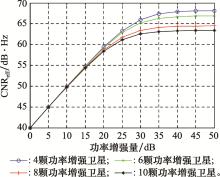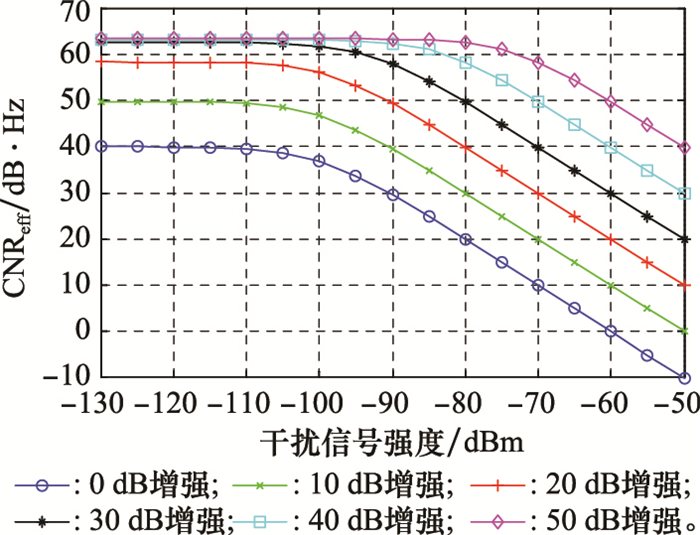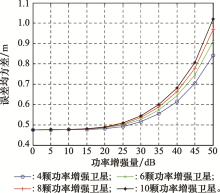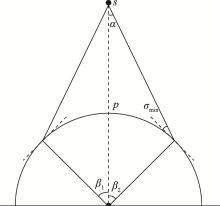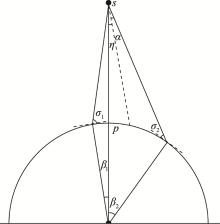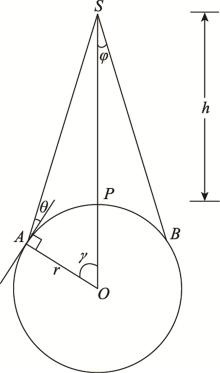| 1 |
HOLLAND R L . GPS in the range of navigation war[J]. Armada International, 1999, 18 (5): 225- 267.
|
| 2 |
杨宁虎, 刘春保, 杨哲. 美国GPS系统导航战技术发展分析[J]. 国际太空, 2017, 12, 4- 8.
|
|
YANG N H , LIU C B , YANG Z . Analysis on GPS navigation warfare technologies[J]. Space International, 2017, 12, 4- 8.
|
| 3 |
PIKE J. GPS Ⅲ/GPS Block Ⅲ[EB/OL][2020-10-14]. http://www.globalsecurity.org/space/systems/gps_3.htm.
|
| 4 |
FONTANA R, LATTERMAN D. GPS modernization and the future[C]//Proc. of the IAAIN World Congress and the 56th Annual Meeting of The Institute of Navigation, 2000: 222-231.
|
| 5 |
HENRY C. SpaceX launches first GPS 3 satellite[EB/OL][2018-12-23]. https://spacenews.com/spacex-launches-first-gps-3-satellite.
|
| 6 |
刘严静, 刘刚, 吴诗其. 低轨卫星移动系统的点波束确定算法[J]. 中国空间科学技术, 2006, 2, 59- 66.
|
|
LIU Y J , LIU G , WU S Q . Spot beam judgement algorithm of low earth orbit satellite mobile system[J]. Chinese Space Science and Technology, 2006, 2, 59- 66.
|
| 7 |
张旭, 吴潜. 低轨卫星系统星载多波束天线点波束设计及优化[J]. 电视技术, 2009, 49 (7): 31- 35.
doi: 10.3969/j.issn.1671-8658.2009.07.005
|
|
ZHANG X , WU Q . Spot-beam design and optimization of on-board multi-beam antenna for LEO satellite systems[J]. Telecommunication Engineering, 2009, 49 (7): 31- 35.
doi: 10.3969/j.issn.1671-8658.2009.07.005
|
| 8 |
董彦磊, 汪春霆, 孙巍. GEO卫星点波束覆盖算法的研究与应用[J]. 无线电通信技术, 2016, 42 (4): 83- 86.
doi: 10.3969/j.issn.1003-3114.2016.04.21
|
|
DONG Y L , WANG C T , SUN W . Research and application of GEO satellite spot-beam covering algorithm[J]. Radio Communications Technology, 2016, 42 (4): 83- 86.
doi: 10.3969/j.issn.1003-3114.2016.04.21
|
| 9 |
ABDULKAREEM K , JON E , IFIOK O . Interference migigation for multi spot beam satellite communication systems incorporating spread spectrum[J]. Institute for Computer Sciences, Social Informatics and Telecommunications Engineering, 2017, 4 (2): 156- 166.
|
| 10 |
梁松柏, 李新卫, 徐军平. 5G波束覆盖优化研究[J]. 邮电设计技术, 2020, (8): 27- 33.
|
|
LIANG S B , LI X WI , XU J P . Research on coverage optimization with 5G beam[J]. Designing Techniques of Posts and Telecommunications, 2020, (8): 27- 33.
|
| 11 |
MICHAEL S , CHRISTIAN H , HELMUT W . Antennas for multiple spot beam satellites[J]. Council of European Aerospace Societies Space, 2011, (2): 27- 29.
|
| 12 |
WANG H T , LU X P , CHEN D , et al. A movable spot-beam scheduling optimization algorithm for satellite communication system[J]. Communications in Computer and Information Science, 2017, 141 (3): 172- 181.
|
| 13 |
韩湘, 郭新哲, 邬基博. 卫星点波束的移动目标指向优化研究[J]. 通信技术, 2015, 48 (5): 536- 540.
doi: 10.3969/j.issn.1002-0802.2015.05.006
|
|
HAN X , GUO X Z , WU J B . Moving-target pointing optimization of satellite spot-beam[J]. Communications Technology, 2015, 48 (5): 536- 540.
doi: 10.3969/j.issn.1002-0802.2015.05.006
|
| 14 |
周钦, 张景阳. 卫星点波束天线指向切换最短时间间隔计算方法[J]. 空间电子技术, 2017, (3): 64- 68.
doi: 10.3969/j.issn.1674-7135.2017.03.014
|
|
ZHOU Q , ZHANG J Y . Minimum interval algorithm for satellite spot beam antenna's pointing and switching[J]. Space Electronic Technology, 2017, (3): 64- 68.
doi: 10.3969/j.issn.1674-7135.2017.03.014
|
| 15 |
翟玉娟, 吴锋. GPS Ⅲ中的点波束及对抗技术探讨[J]. 电光系统, 2014, 6 (2): 19- 23.
|
|
ZHAI Y J , WU F . Research on spot beam in GPS Ⅲ and countermeasures[J]. Electronic and Electro-optical Systems, 2014, 6 (2): 19- 23.
|
| 16 |
刘艳亮, 张海平, 徐彦田, 等. 全球卫星导航系统的现状与进展[J]. 导航定位学报, 2019, 7 (1): 18- 21.
|
|
LIU Y L , ZHANG H P , XU Y T , et al. Development status and trend of global navigation satellite system[J]. Journal of Navigation and Positioning, 2019, 7 (1): 18- 21.
|
| 17 |
MACRO D , FERDINANDO D . PNT for Defense[M]. Switzerland: Handbook of Space Security, 2019.
|
| 18 |
孙进, 初海彬, 董海青, 等. 导航卫星系统功率增强技术与覆盖范围研究[J]. 测绘学报, 2011, 40, 80- 84.
|
|
SUN J , CHU H B , DONG H Q , et al. Research on power-enhanced technology and coverage areas of global navigation satellites[J]. Acta Geodaetica et Cartographica Sinica, 2011, 40, 80- 84.
|
| 19 |
吕志成, 聂俊伟, 刘增军, 等. 卫星导航系统功率增强对接收信号质量的影响分析[J]. 空间科学学报, 2013, 33 (1): 101- 107.
|
|
LYV Z C , NIE J W , LIU Z J , et al. Effects of enhancing power on received signal quality in satellite navigation system[J]. Chinese Journal of Space Science, 2013, 33 (1): 101- 107.
|
| 20 |
MISRA P , ENGE P . Global positioning system: signals, measurements, and performance[M]. Lincoln: Ganga-Jamuna Press, 2006.
|
| 21 |
KAPLAN E D , HEGARTY C J . Understanding GPS: principles and applications[M]. 2rd edition Boston: Artech House, 2006: 243- 300.
|
| 22 |
BETZ J W. Design and performance of code tracking for the GPS M code signal[C]//Proc. of 13th International Technical Meeting of the Satellite Division of the Institute of Navigation, 2000: 2140-2150.
|
| 23 |
徐慨, 鲍凯, 何爱林. 卫星通信点波束覆盖算法研究[J]. 舰船电子对抗, 2013, 36 (2): 66- 68.
doi: 10.3969/j.issn.1673-9167.2013.02.017
|
|
XU K , BAO K , HE A L . Research into satellite communication spot beam covering algorithm[J]. Shipboard Electronic Countermeasure, 2013, 36 (2): 66- 68.
doi: 10.3969/j.issn.1673-9167.2013.02.017
|
| 24 |
韩湘, 郭新哲, 屈会鹏. GEO通信卫星姿态对点波束天线指向影响分析[J]. 飞行器测控学报, 2015, 34 (1): 77- 82.
|
|
HAN X , GUO X Z , QU H P . Impact of attitude movement on spot beam pointing for GEO communication satellites[J]. Journal of Spacecraft TT&C Technology, 2015, 34 (1): 77- 82.
|
| 25 |
刘庆军, 孙进, 武向军. 基于点波束增强的卫星导航系统拒止与欺骗干扰研究[C]//第七届中国卫星导航学术年会, 2016.
|
|
LIU Q J, SUN J, WU X J. Analysis of denial and spoofing jamming based on spot-beam and power-enhancement to navigation service[C]//Proc. of the 7th China Satellite Navigation Conference, 2016.
|
